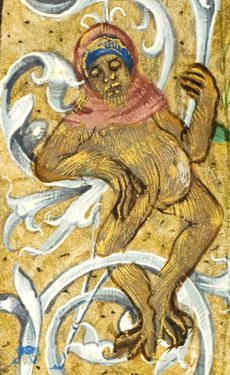Michael Camille
In his first book, The Gothic Idol: Ideology and Image-Making in Medieval Art (New York: Cambridge University Press, 1989), Camille focused on the ”others” of the Middle Ages, studying representations of Jews, homosexuals, heretics, and Muslims through the theme of idolatry in medieval art. Camille continued to shed light on the edges of the medieval world, exploring the edges of the monastery, cathedral, court, and city through manuscripts and sculptures in Image on the Edge: The Margins of Medieval Art (London: Reaktion Books, 1992) and confronting ideology in the margins of a manuscript in Mirror in Parchment: The Luttrell Psalter and the Making of Medieval England (Chicago: University of Chicago Press, 1998).
Camille’s works reflect concerns that were relevant to both the medieval and the modern. Against the backdrop of a modern plague, AIDS, Camille’s Master of Death: The Lifeless Art of Pierre Remiet, Illuminator (New Haven, Conn.: Yale University Press, 1996) took a narrative approach to a previously unstudied artist and the theme of death, imagining the artist’s last daythrough his illuminated images of the bubonic plague. The last book Camille wrote, The Gargoyles of Notre Dame: Medievalism and the Monsters of Modernity, published posthumously by the University of Chicago Press in 2009, investigates a modern vision of the Middle Ages through the nineteenth-century gargoyles of Notre Dame. His works are still extensively cited in new publications and hold places on essential reading lists. Michael Camille continues to inspire medievalists and art historians today.

